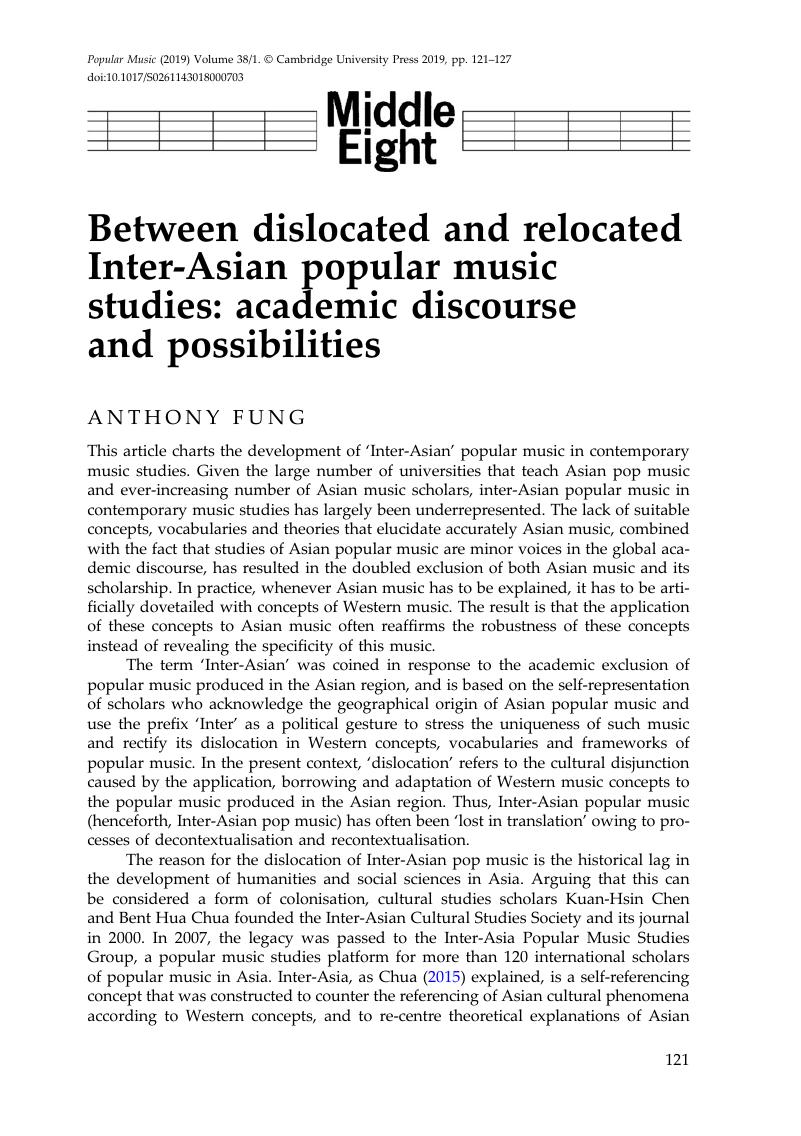Crossref Citations
This article has been cited by the following publications. This list is generated based on data provided by Crossref.
Zhang, Qian
and
Fung, Anthony
2019.
Introduction: Historicizing globalization—Popular musics in Asia and beyond.
Global Media and China,
Vol. 4,
Issue. 4,
p.
399.
Zhang, Hongzhi
and
Chan, Philip Wing Keung
2023.
International Handbook on Education Development in Asia-Pacific.
p.
1.
Zhang, Hongzhi
and
Chan, Philip Wing Keung
2023.
International Handbook on Education Development in the Asia-Pacific.
p.
79.
Fung, Anthony
2023.
Remark on China as method.
Global Media and China,
Vol. 8,
Issue. 4,
p.
506.
Zhang, Qian
and
Negus, Keith
2024.
From cultural intermediaries to platform adaptors: The transformation of music planning and artist acquisition in the Chinese music industry.
New Media & Society,



